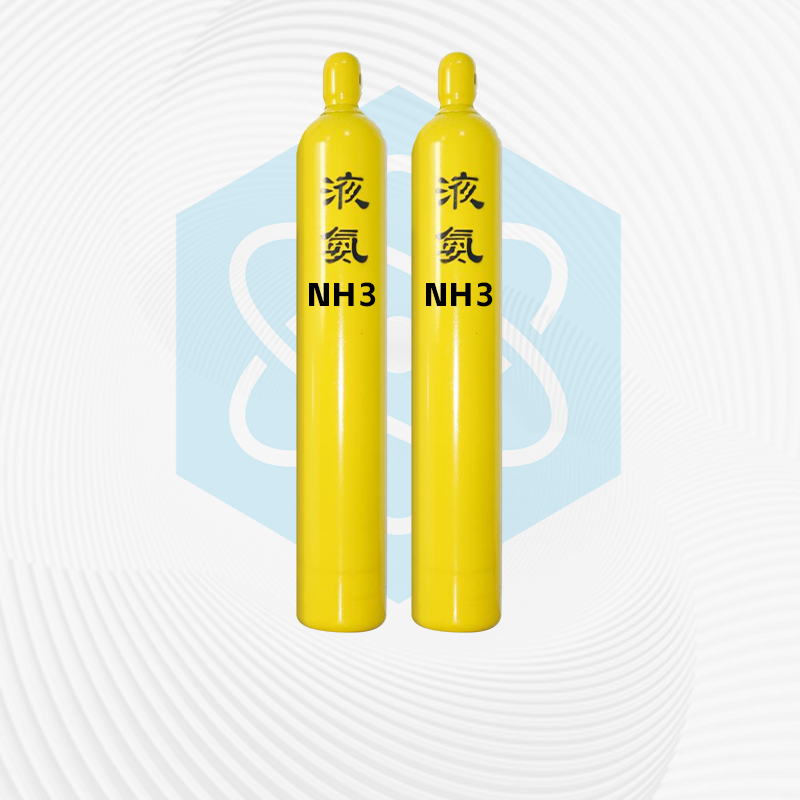Gas Description
Ammonia, NH3, colorless gas. Has a strong pungent odor. Density 0.7710. Relative density 0.5971 (air=1.00). Easy to liquefy into colorless liquid. It can be liquefied by pressurizing at room temperature (critical temperature 132.4 ℃, critical pressure 11.2 megapascals, or 112.2 atmospheres). Boiling point -33.5 ℃. It is also easy to solidify into a snowy solid. Melting point -77.75 ℃. Soluble in water, ethanol, and ether. At high temperatures, it will decompose into nitrogen and hydrogen, which have a reducing effect. When a catalyst is present, it can be oxidized to nitric oxide. Used for producing liquid nitrogen, ammonia, nitric acid, ammonium salts, and amines. It can be synthesized directly from nitrogen and hydrogen, and can burn the mucous membranes of the skin, eyes, and respiratory organs. Inhalation of too much can cause lung swelling and even death.
Main uses of the product
1. Used in industries such as chemical, food, and medicine.
2. Liquid ammonia, ammonia water, nitric acid, ammonium salts, and amines.
3. Fertilizers, refrigerants, chemical raw materials, etc.
4. Used for large-scale integrated circuit decompression or plasma CVD to grow silicon dioxide films.
5. Refrigerant and production of ammonium salts and nitrogen fertilizers.
6. Quality assurance and control in environmental monitoring and analysis testing can also be used for instrument calibration, method validation, and technical arbitration.




